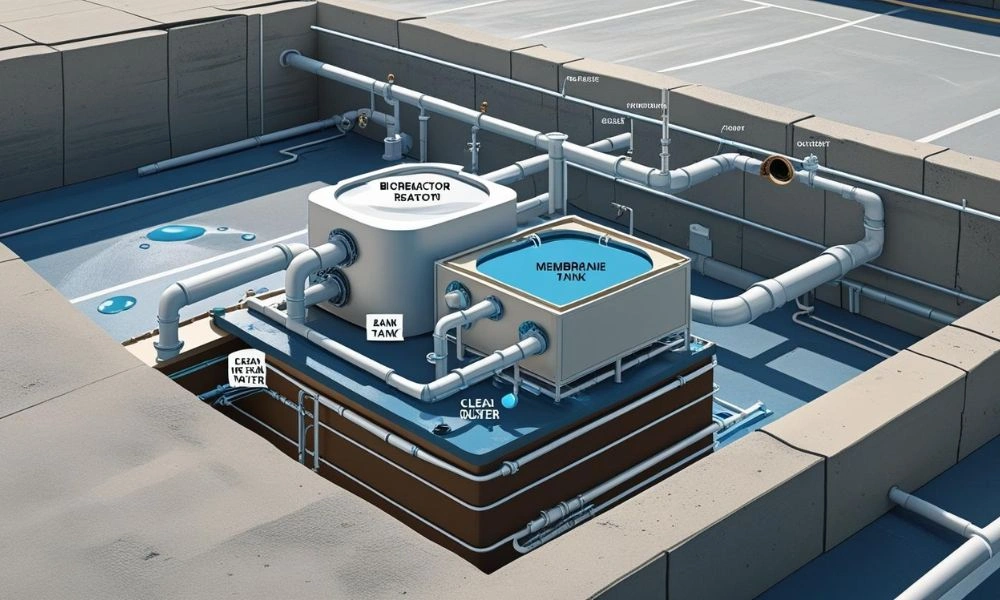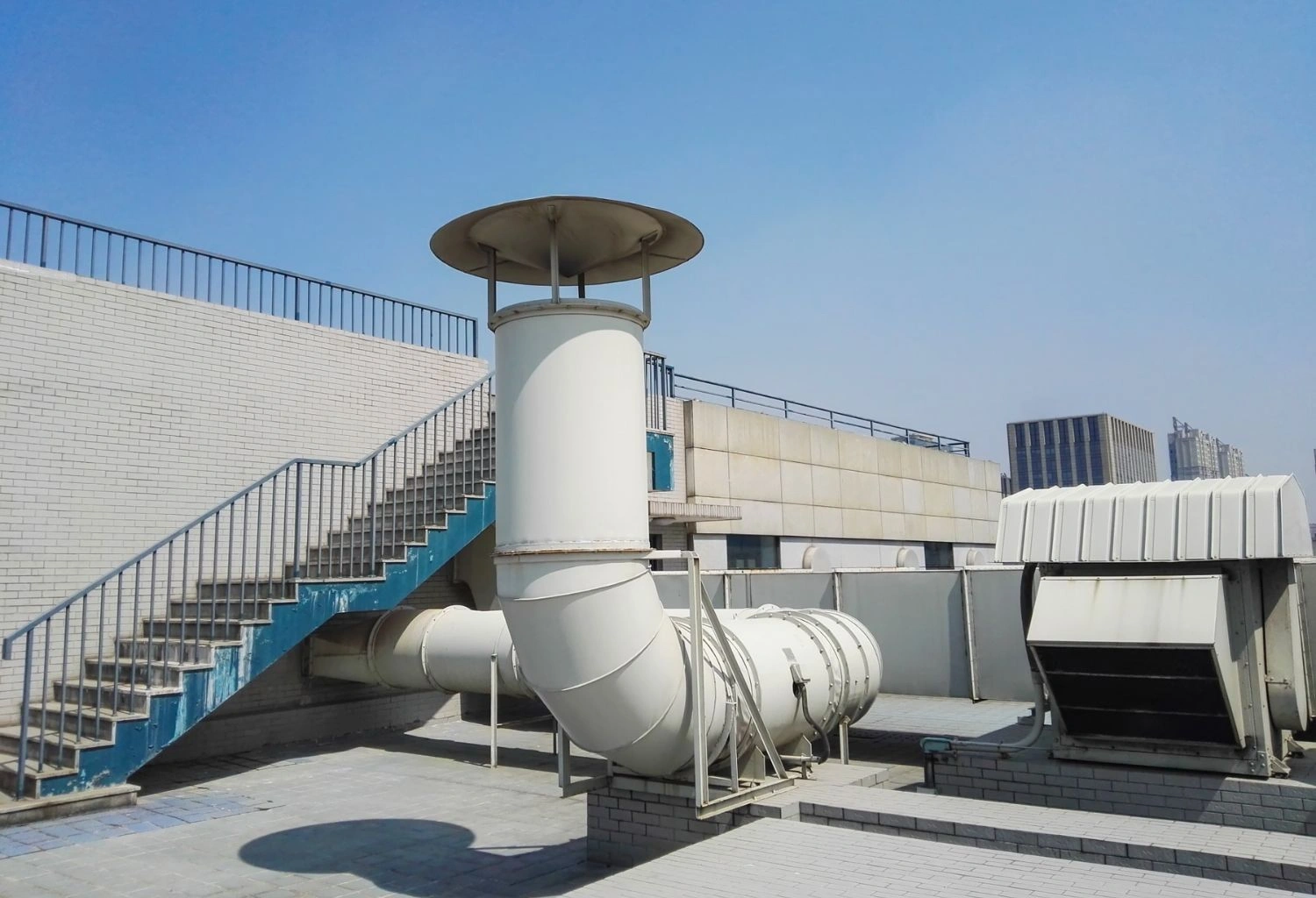Modern water management technology now moves underground, offering industries and cities a smarter way to save space, reduce waste, and improve sustainability. WCSP leads the way with underground electrocoagulation, bioreactors, and smart automation systems that are durable, secure, and NEQS-compliant—delivering long-term environmental and operational benefits.
Why Go Underground for Water Management?
In a water-scarce world where more and more people live in cities, industries and cities are looking for higher-tech, space-saving, and eco-friendly solutions. Water Management Technology is advancing with innovative underground infrastructure that not only efficiently manages water but also maximizes land use, energy efficiency, and long-term reliability of operations.Cities are expanding. Industrial parks are expanding. Land is pricey and in short supply. Surface-based water infrastructure, such as big tanks, settling ponds, and treatment facilities, takes valuable real estate. The answer? Take it underground.By incorporating subsurface water management technology, Pakistan’s industries and municipalities, as well as cities around the world, can:
- Optimize land use
- Conceal infrastructure for visual appeal
- Shield systems from nature’s impact
- Enhance operational security and safety
Cooling Tower Water Treatment
Cooling Tower Water Treatment
Cooling Tower Water Treatment A cooling tower is a specialized heat exchanger that lowers the temperature of circulating water through direct contact with air. Operating on the principle of evaporative cooling, a small amount of
Cooling Tower Water Treatment
What Is Water Management Technology?
Water Management Technology is the term used to describe devices, systems, and technologies applied to efficiently treat, recycle, monitor, and store water. They encompass:
- Smart sensors and IoT monitoring
- SCADA automation systems
- Subsurface storage tanks
- Membrane filtration
- Electrocoagulation and AOP (Advanced Oxidation Processes)
- Stormwater harvesting systems
- Bioremediation units
When installed underground, the technologies become stronger, secure, and compact.
The Role of WCSP in Underground Water Technology Integration
Water Care Services Pakistan (WCSP), founded in 2007, is leading the underground water management technology revolution in the nation. Through compact modular treatment systems, SCADA integration, and bioremediation, WCSP assists industries in recovering land space as well as adhering to national environmental regulations.
Their underground systems consist of:
- Modular MBBR bioreactors
- Electrocoagulation skid units
- Underground balancing tanks
- Membrane filtration and UV disinfection systems
- Smart underground greywater recycling
True Advantages of Underground Water Management Technology
1. Space Optimization
Land can be set aside for commercial or industrial use while treatment units are run underground.
2. Security and Longevity
Weather-protected, vandalism-proof, and UV-resistant, underground units are longer-lasting and less in need of repairs.
3. Reduction of Noise and Odors
Placing units underground serves to trap system noise and undesirable odors in wastewater treatment operations.
4. Temperature Stability
Consistent underground temperatures lower energy needed for heating or cooling water, particularly in biological systems.
5. Aesthetic and Environmental Harmony
Parks, parking lots, and structures may be placed above treatment systems—ideal for commercial and city use.
Example Use Case – Karachi Industrial Zone
A top textile unit in Karachi collaborated with WCSP to incorporate underground membrane bioreactors and electrocoagulation. Major results:
- Saved 1200 sq. ft. of surface area
- Recovered 85% of wastewater for reuse
- Acquired NEQS compliance
- Decreased noise complaints from nearby structures
 Table: Surface vs. Underground Water Management Technology
Table: Surface vs. Underground Water Management Technology
| Feature | Surface Systems | Underground Systems |
|---|---|---|
| Space Utilization | High | Low |
| Security | Moderate (open) | High (enclosed) |
| Installation Cost | Lower initially | Higher but long-term savings |
| Maintenance | Exposed, frequent | Less exposure, less maintenance |
| Aesthetics | Visible infrastructure | Hidden infrastructure |
| Noise/Odor Management | Requires barriers | Naturally contained underground |
| Durability | Weather-exposed | Protected, more durable |
Sustainable Impact and Environmental Responsibility
One of the strongest arguments for implementing underground water management technology is that it is in harmony with environmental sustainability objectives. These systems facilitate water reuse, minimize chemical use, and limit surface runoff polluting local water bodies.
Future Water Management Trends in Technology
With smart cities becoming increasingly prevalent and urbanization ongoing, water management technology will increasingly become embedded in artificial intelligence, real-time data analytics, and predictive maintenance technologies. WCSP is already working with AI-based modules that can learn from plant operation and optimize underground system treatment cycles.
Conclusion
Water Management Technology is not confined to huge, surface-level infrastructure anymore. By taking systems underground, WCSP is assisting companies and cities in freeing up space, enhancing performance, and making a commitment towards environmental sustainability. With space-saving technologies such as electrocoagulation, membrane systems, and intelligent automation—all housed underground—Pakistan stands poised to redefine the next generation of water efficiency.
Whether you’re planning a new facility or retrofitting an old one, moving underground with WCSP’s advanced water management technology is a smart, future-ready choice.
Frequently Asked Questions (FAQs)
1. Why should industries and cities consider underground water management systems?
Underground systems save surface space, enhance infrastructure protection, reduce noise/odors, and optimize land use for other commercial or industrial purposes.
2. What is water management technology?
Water management technology includes systems like smart sensors, SCADA, membrane filtration, and bioremediation to efficiently treat, recycle, and monitor water.
3. How does underground placement benefit water infrastructure?
It provides protection from weather and vandalism, stabilizes temperature, reduces operational noise, and improves aesthetics by hiding infrastructure.
4. What technologies does WCSP use underground?
WCSP integrates modular MBBR units, electrocoagulation skids, underground tanks, membrane filtration, UV disinfection, and IoT-based monitoring.
5. How does going underground support environmental sustainability?
It promotes water reuse, limits chemical usage, prevents runoff pollution, and aligns with zero-liquid discharge and green building principles.
6. What is an example of underground tech success in Pakistan?
In Karachi, a textile unit used WCSP’s underground systems, saving 1200 sq. ft., recycling 85% wastewater, and gaining NEQS compliance.
7. Is underground installation more expensive?
Initial costs are higher, but reduced maintenance, longer lifespan, and land value gains provide substantial long-term savings.
8. Can underground systems be used in smart cities?
Yes. WCSP’s systems integrate with AI, SCADA, and predictive maintenance tools, ideal for smart city and urban infrastructure.
9. What types of water can be treated underground?
Greywater, industrial wastewater, stormwater, and process water can all be efficiently treated underground using advanced technologies.
10. Why choose WCSP for underground water systems?
With over 17 years of experience, WCSP offers customized, compact, and compliant underground solutions tailored to Pakistan’s industrial and municipal needs.


